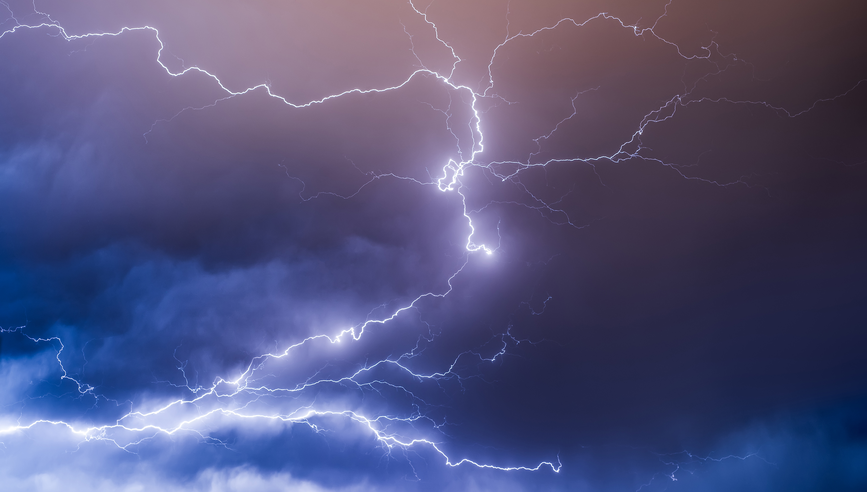Identifying Hail Damage to Your Roof


Are you aware that during a hailstorm more than just your vehicles are potentially vulnerable to damage and future repairs? When hail hits, it can damage the roof or covering of your home as well as other personal property. Although hailstorms can be destructive, the amount of damage can vary greatly. Following are some factors that affect the type and degree of damage that may be impacted by a hailstorm, as well as a guide on how to identify hail damage to different types of shingles and roofing materials.
- Wind – During a hailstorm, wind direction and wind speed can vary. Changes in wind conditions can affect the location and severity of hail impacts.
- Size and density – The size of the hailstones can affect the degree of damage, if any, to your property. A hailstone can be as small as a pea or as large as a softball. Most hailstones do not have smooth edges, which can impact the type of damage they cause.
- Building materials – Building materials absorb hail impacts differently. For example, hail can cause dings in aluminum siding, gutters or asphalt shingles, whereas it can crack vinyl siding or wood shakes. Alternatively, softball-sized hailstones can be dense enough and strong enough to puncture a roof. Additionally, the age and condition of a roof could affect the degree of damage.
- Barriers – The position of neighboring structures and natural barriers, like tree cover, landscaping, fences or adjacent homes, can reduce the ability of hail to cause damage.
What Does Hail Damage to Your Roof Look Like?
Shingles can react differently when struck by hail. As an example, hail damage to asphalt and composition shingles can look very different than hail damage to wood shingles. It is important to know the different effects of the damage to properly identify whether or not you have roof damage from hail.
Asphalt and Composition Shingles Hail Damage
- Random damage with no discernable pattern.
- Hail hits that are black in color.
- Loss of granules, which may expose the roof felt.
- Asphalt and/or mat that appears shiny.
- Hail hits that are soft to the touch, like the bruise on an apple.
Wood Shingles Hail Damage
- Random damage with no discernable pattern.
- A split in the shingle that is brown/orange in color.
- A split in the shingle that has sharp corners and edges.
- A split in the shingle that has little to no deterioration at the edges.
- Impact marks or dents along the splits.
There are many other types of damage to shingles that can be mistaken for hail damage. For example, exposure to inclement weather and sunlight makes shingles brittle and gives them an aged appearance. This type of damage is normal wear and tear of shingles, which is sometimes misidentified as hail damage. Other types of normal wear and tear may include blistering, cracking, granule loss, flaking and algae. Manufacturing defects and mechanical imperfections in shingles can also be mistaken for hail damage.
If you believe your home has sustained damage from hail, call your agent or insurance representative to discuss possible next steps.

HOW TO IDENTIFY HAIL DAMAGE ON YOUR ROOF DID YOU KNOW…DAMAGE CAUSED BY HAIL TOTALS ABOUT $1 BILLION A YEAR 1
Roof hail damage can be random with no discernible pattern, while hail damage to asphalt and composition shingles can look very different than hail damage to wood shingles. Here’s what to look for.
1 Asphalt and Composition Shingle Damage
This includes hail divots that are black in color, or are soft to the touch, like the bruise on an apple. Also, look for any loss of granules, visible damage to the shingle, and asphalt and/or mat that appears shiny.
2 Wood Shingle Hail Damage
Look for any splits in shingles that are brown/orange in color, have sharp corners and edges or that have little to no deterioration at the edges. Other issues include impact marks or dents along the splits.
3 Factors That Can Affect Damage Caused by Hail:
Changes in wind conditions and direction can affect the location and severity of hail impacts. Nearby barriers such as other homes and trees can reduce the ability of hail to cause damage. Depending on what your home is constructed from, the type and condition of its building materials and the pitch of your roof will help determine if your property is damaged by hail. And the size, density and speed of hailstones will determine if your roof sustains hail damage.
4 Roof Damage Not Caused by Hail
It can be easy to mistake other roof issues for hail damage. Exposure to inclement weather and sun can make shingles brittle and appear aged. Normal wear and tear such as blistering, cracking, granule loss, flaking and algae, all can appear as shingles age.
Shingles also can have manufacturing defects and mechanical imperfections that might be mistaken for hail damage.
Share this infographic with your friends, family and neighbors to help them #ThinkSafe
Get more tips to help make your home safe and secure travelers.com/weathersafety
1 http://stormdamagecenter.org/hail-storm.php
The Travelers Indemnity Company and its property casualty affiliates. One Tower Square, Hartford, CT 06183
travelers.com
This material does not amend, or otherwise affect, the provisions or coverages of any insurance policy or bond issued by Travelers. It is not a representation that coverage does or does not exist for any particular claim or loss under any such policy or bond. Coverage depends on the facts and circumstances involved in the claim or loss, all applicable policy or bond provisions, and any applicable law. Availability of coverage referenced in this document can depend on underwriting qualifications and state regulations.
© 2017 The Travelers Indemnity Company. All rights reserved. Travelers and The Travelers Umbrella logo are registered trademarks of The Travelers Indemnity Company in the U.S. and other countries.



